![]()
![]()
|
|
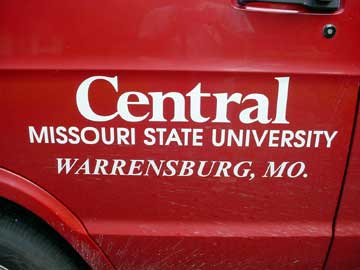 |
![]()
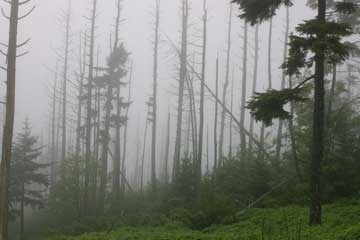 |
|
|
|
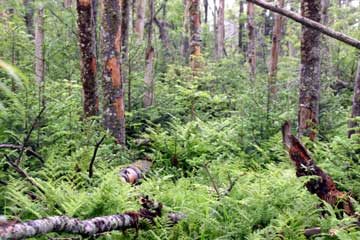 |
 |
|
|
|
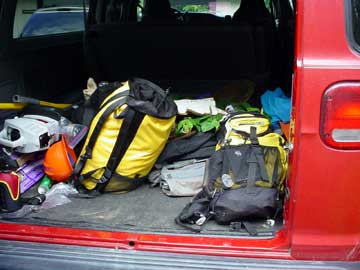 |
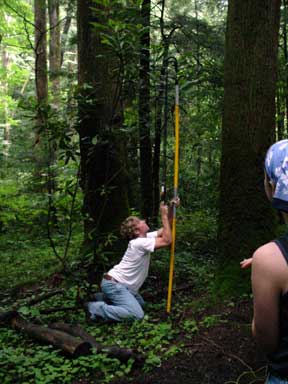
The first trip out was up along the Ridge Mountain Road and it took TWO HOURS to get a line up into a cherry tree! There are many laughs and a few sore body parts as members learn to master the massive Big Shot! |
 |
![]()
And climbing...WOW...you are getting the knots right and your arms and legs are cooperating, but you have never had to be up in the tree so long! You realize that you will be fighting cramps and numb body parts often over the next few days.
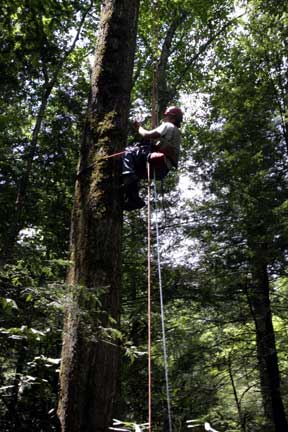
Tommy is an agile climber and ascends the tree quickly. |
 |
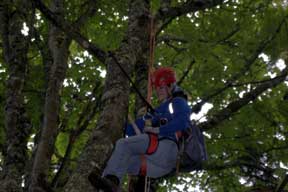
Amber and Cheryl are in their trees and ready to collect samples. Each climber has to carry a hammer, nails, tree tags, collecting bags, knive, measuring devises, chalk, HOBO unit, water bottle, bug spray, etc. and Amber laughs as she says that "...everyone has dropped something! ...hammers, bark, waterbottles..." 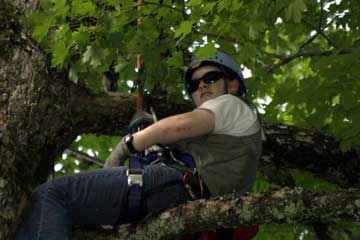 |
You and Cheryl have organized all these materials in a vest that you wear or on your belt. Other climbers have put their back packs to use, carrying the items on their backs.
|
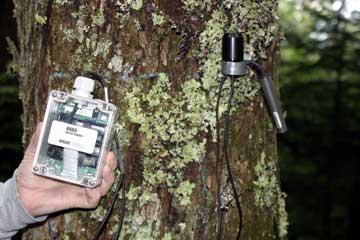
There is a lot to do while you are up in the tree. Environmental factors are measured at several heights with the HOBO unit. It must be level and attached to the trunk of the tree for five minutes to get accurate readings. |
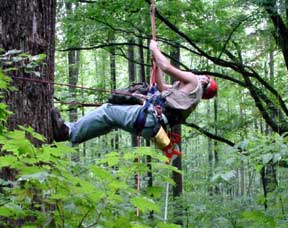
You can see the safety line that helps Tommy stay secure while he "walks up the side of the tree. Notice the large pack laying in his lap...it is full of the many tools that a climber must take up. |
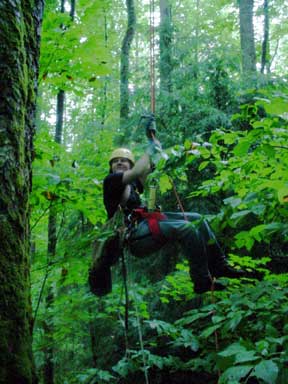
Erin is too far away from the trunk of the tree to "walk" up, so she is relying on the body thrust technique, where a climber kicks his/her feet above their head at the same time as they turn nearly upside down in the saddle and pull themselves up with their arms. The climber then quickly pushes the Blake’s Hitch upward along the standing end of the rope until no slack remains in the split tail. |

You are also measuring the bark ridges and valleys and collecting bark specimens at each level.  |
If you look carefully at the images below, you will see that Cheryl is adding strength to her body thrust method of ascending the tree by having her foot looped through a section of the climbing rope.
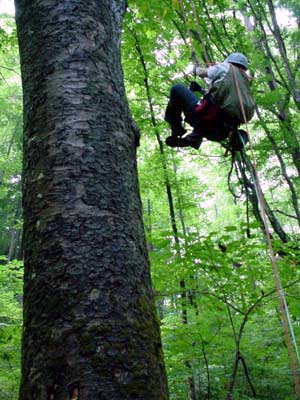 |
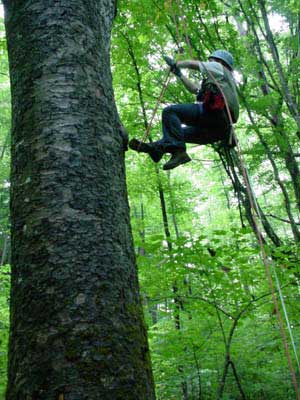 |
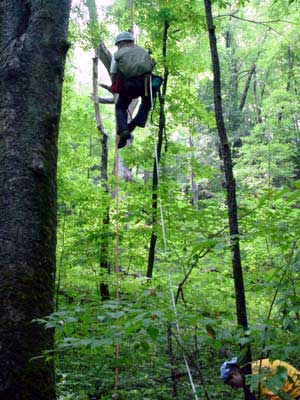 |
CLICK HERE To learn about some of the other people who joined the team in the field.